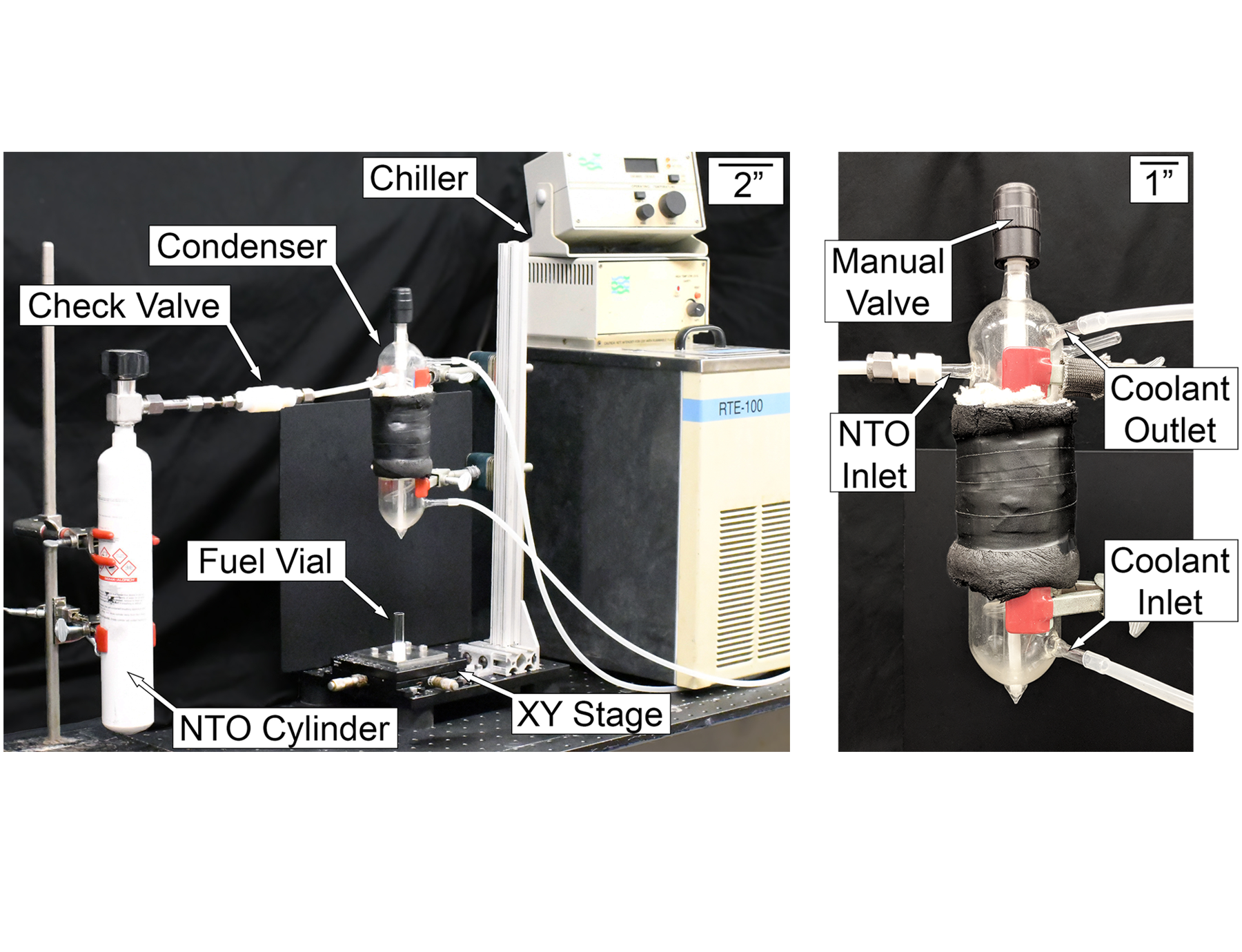Ignition Delay Measurements Using Drop Tests
 Fig. 1. Experimental setup for performing drop tests with nitrogen tetroxide and various fuels.
Fig. 1. Experimental setup for performing drop tests with nitrogen tetroxide and various fuels.
Fig. 2. Resulting ignition after a drop of nitrogen tetroxide contacts a pool of monomethylhydrazine (1/30 playback speed).
Fig. 3. Resulting ignition after a drop of nitrogen tetroxide contacts a pool of an undisclosed fuel at varying pressures.
Fig. 4. Resulting ignition after a drop of an undisclosed oxidizer contacts a pool of an undisclosed fuel.
Fig. 5. Resulting ignition after a drop of 90% hydrogen peroxide contacts grains of sodium borohydride.